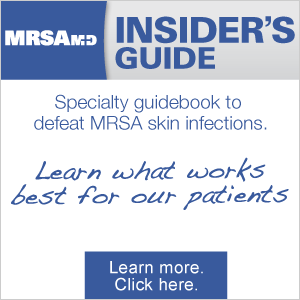Risk Factors for Community-associated MRSA
Overview
Community-associated MRSA (CA-MRSA) is MRSA contracted outside of the healthcare setting, usually in healthy individuals. CA-MRSA is associated with many serious infections; however, skin infections are the most common presentation of CA-MRSA.
Risk factors for skin infections
- Broken skin, or an open wound.
- Crowded living conditions including:
- Schools
- Dormitories
- Long-term care facilities
- Correctional facilities
- Skin-to-skin contact, i.e. athletes in contact sports.
- Sharing athletic equipment.
- Sharing personal items such as:
- Bar soap
- Washcloths
- Towels
- Razors
- Makeup
- Clothing
- Infants and toddlers are at increased risk because:
- They have close contact with other children, especially if they are in daycare.
- Young children have a less-developed immune system.
- Poor hygiene.
- Repeated antibiotic exposure. Antibiotics are used for specific purposes, and typically target more common and less resistant bacteria. (Note: no one antibiotic is able to kill all bacteria.) Therefore, repeated exposure to antibiotics kills off the more common bacteria leaving room for more resistant bacteria to invade or colonize (harbor) the body.

